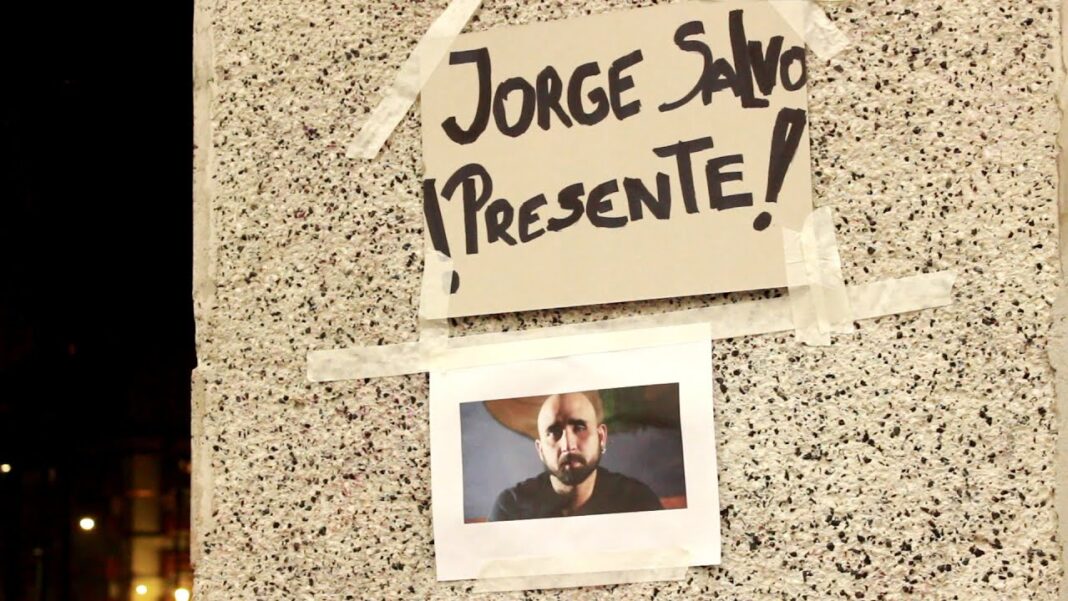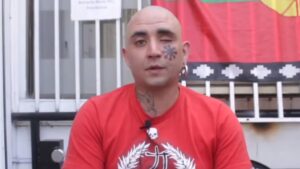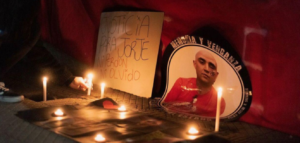
The violent police repression during the 2019 protests in Chile left Jorge Salvo with the loss of an eye and marked a spiral of personal challenges. His story highlights the lasting impact of social violence, its emotional aftermath, and raises unsettling questions about responsibility and the necessary change in Chilean society.
By Francisca López
Journalist FORO HUMANOS
Three months before Carabineros, the Chilean police, shot Jorge Salvo directly in the eyes, a scene of social effervescence was already brewing in the Chilean streets. For weeks, crowds of citizens gathered and weaved their collective narrative into a protest that resonated with the quest for more just living conditions.
It was the fare increase in Santiago’s public transportation on October 18, 2019, which triggered thousands of high school students to organize a massive escape on the Santiago Metro. “It’s not 30 pesos, it’s 30 years”as if inequalities had lit a flame in the hearts of these students, who, with determination, decided to challenge the imposed economic barriers.The mass escape, in its emotional rebellion, marked a moment in which young people decided to take the reins of their future, challenging injustices with the collective strength of their convictions.The subway stations were transformed into scenes of resistance, where youth united in a collective act of civil disobedience.
“Students won’t let you sleep if you don’t let them dream”says the song “The Right to Live in Peace” by Victor Jara in an authorized version, an initiative of Chilean singers to portray the fight for the dignity of the country.
Government response
It was on that same night when points of protest emerged, acts of looting and riots that spread throughout the national territory. Faced with this situation, then-president Sebastián Piñera made the decision to declare a state of emergency and establish a curfew.
The demands, framed by the need to improve the quality of health and education services, as well as ensure decent housing and equitable pensions, freedom and dignity, were the unified cry of a population seeking to be heard.This moment marked the tragic fate of thousands of people, victims of human rights,The loss of human life was recorded, as well as a significant number of individuals who suffered injuries and mutilations, as a result of the excessive use of force by the Carabineros.
Impact of police violence
According to the annual report of the National Institute of Human Rights (INDH) for 2022. Of the 3,626 victims with cases for which the INDH filed complaints, 1,748 reported at least one shooting incident. It is important to note that some people were shot on more than one occasion, and not always with the same type of ammunition. In this context, the total number of reported shots amounts to 1,785, distributed as follows: 1,230 pellets, 337 tear gas bombs, 106 pellets, 62 unidentified ammunition, 44 bullets and 6 associated with other types of ammunition and/or projectiles.
Of those, 345 people suffered injuries related to eye trauma. According to information from the Ministry of Health, from October 18 to December 2, the Hospital del Salvador in Santiago treated a total of 239 patients affected by eye injuries.
The daily struggle of Jorge Salvo, victim of eye trauma
On January 17, 2020, Jorge, a 27-year-old young man, became an unexpected protagonist of the turbulent events that marked Chile in that period. In the midst of the worst wave of protests that the country had witnessed since the end of the dictatorship in 1990, an agent from the Carabineros police force altered the course of Jorge’s life by firing a tear gas bomb from less than 25 meters away.

Plaza Italia, the iconic roundabout in Santiago that became the epicenter of the massive demonstrations, was the scene of the attack. In the midst of the effervescence of protests and the search for social changes, Jorge’s life became intertwined with the history of a country in the midst of a citizen awakening.
Jorge Salvo: Between Smoke and Desperation
According to an interview with the Voice of Maipú, in the middle of the curtain of white smoke, a police officer emerged holding a shotgun and, without warning, fired.
“My vision became blurry, I couldn’t see because of the tear gas that was in the air. With my eyes closed I felt a shoulder and asked for help. At that moment I only heard “Hey buddy your eye, your eye.” I didn’t understand anything, he said
At that moment, Jorge received help from the protesters themselves. They covered his eyes and, later, in the middle of a considerable crowd, they led him to an ambulance, since the Carabineros were preventing the entry of emergency vehicles. During the ambulance ride, Jorge lost track of time. He regained consciousness around 1 or 2 in the morning at Posta Central. His mother was next to him, visibly affected, watching him while he cried.
At the medical center, the shocking news of the loss of an eye was insensitively communicated to Jorge by a doctor. The events occurred on Saturday, and it was not until Monday that he was able to undergo an operation to remove everything that remained of his mutilated eye, in addition to suffering fractures in his cheekbone.“I was at all times with my eye almost reaching my cheek”. Despite the interruption of treatment due to the pandemic, the crucial support of the post’s Ocular Trauma Unit stands out, which included psychological treatment and occupational therapy. However, the latter were interrupted due to the COVID-19 situation.
Long-term consequences
The violence of that moment left more than physical wounds; It left emotional scars and marked Jorge as an unwitting witness to the challenges and tensions that were experienced in the streets. The closeness of Jorge’s aggression with the experience of Gerardo Van der Meer, 23 years old, who was also injured in the vicinity of Plaza Italia, underlines the complexity and intensity of those days.
According to an interview with Susana Alarcón, Jorge’s mother, he had to relearn how to live again. The first weeks were very difficult. In the hospital he needed the help of a nurse for the most basic things, like going to the bathroom, eating or getting out of bed, he was dizzy all the time.
After a week in the hospital, Jorge returned home with severe limitations due to the complete loss of his eye. For a month, he faced difficulties in carrying out daily activities and was forced to stay home. The uncertainty over his recovery negatively affected his working life as a self-employed electrician. Three years later, he remained unemployed and faced social discrimination due to his condition, including the use of a prosthesis. The situation had a devastating impact on his life and his ability to adapt to this new reality, including caring for his daughter.
On June 28, 2023, Jorge chose to throw himself onto the train tracks, feeling that the State had abandoned him. This young man, father of a daughter, succumbed to depression caused by post-traumatic stress, becoming the fourth individual with ocular mutilation to make the tragic decision.


